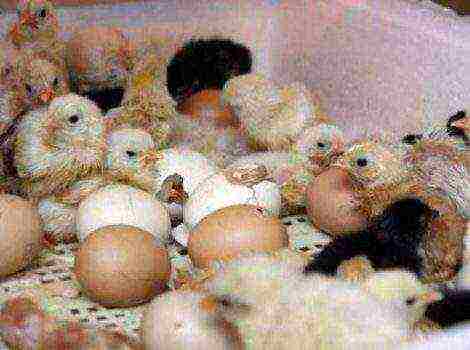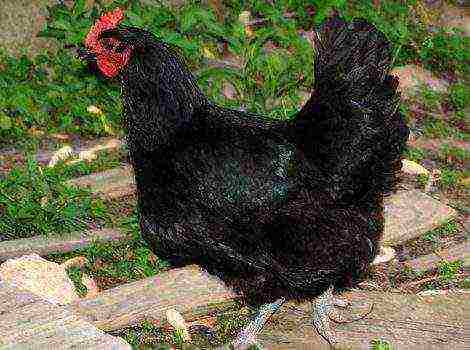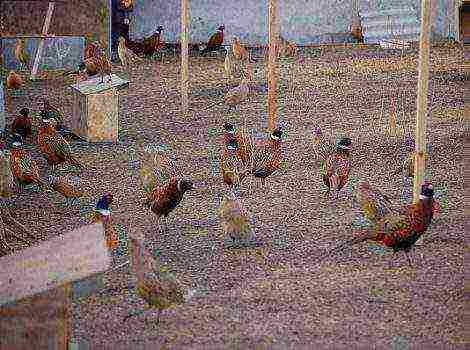Content
Pavlovsk breed of chickens
Since the 18th century, Russian farmsteads have been decorated with motley Pavlovsk chickens. The almost extinct breed, the description and photo of which can be viewed below, is again gaining popularity among poultry farmers.
Exterior description
- Head loosely rounded, small.
- Crest compressed on all sides, looks like a helmet, curl.
- Around eyes and cheeks protruding feathersgoing down under the beak, they form a beard and tanks. A tight collar along the entire length of the neck.
- Comb and lobes small, underdeveloped. The base of the crest is located near the parietal part, located across the head.
- Beak straight or slightly curved, thin, with a nasal septum visible from the side. The nostrils are raised. It can be pink, yellow, black and blue.
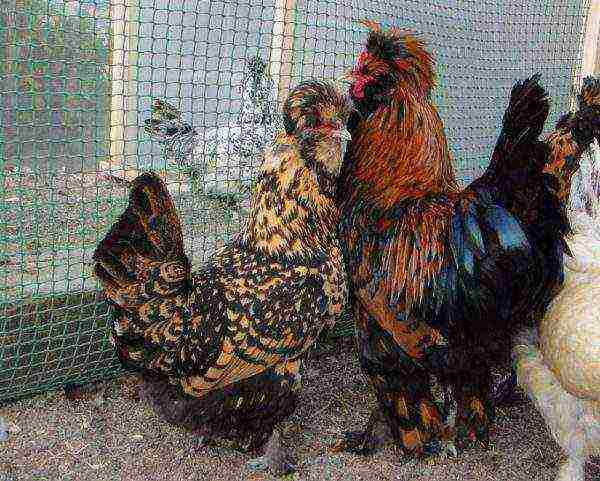
- Eyes yellow or black. Slightly convex. Medium size.
- Pavlovsk chickens in appearance resemble pheasants... The body is horizontal, compact, massive, compressed. The back is of medium length.
- Plumage spotted, variegated. The feathers are black at the beginning and end. The middle is white or golden. There are black and white, silver, black and gold, fawn, white coloration of Pavlovsk chickens.
- Tail fluffy, graceful. Raised upwards like a fan.
- Wings well developed. Flight feathers are tightly pressed to the body, sometimes protruding beyond the contours of the wing.
- Legs are feathered on the outside and inside. On the shins there are "hawk tuft" ("hawk popliteal") - feathers bent at the ends, elongated in the form of spurs.
- Four fingers are feathered with small feathers. Paws dark, blue-black.
Exterior disadvantages
A bird at an exhibition is rejected if:
- Excessive plumage or lack of feathers on the legs.
- Outsider Colour in color.
- Fifth finger on the foot.
- Oversized or missing beards.
- Large spreading crest.
- Leg color inappropriate to the main one.
Historical reference
Crested chickens with unusual plumage and "capercaillie" legs struck at the end of the XVIII century the traveler PS Pallas, who saw them in the village of Pavlovo, Nizhny Novgorod province.

In the century before last, at agricultural exhibitions Pavlovsky chickens have repeatedly been recognized as "royal" and received the status of the best national breed. However, by the end of the 19th century, interest in decorative birds disappeared, and after the revolution, the Pavlovsk breed disappeared altogether.
Only in the 80s of the last century, attempts were made to revive the standard Pavlovian bird. As a result of crossing Dutch breeds, Sultan breeds, faveroli and la-fresh, breeders have achieved the desired result.
Pavlovsk roosters
 According to the constitution, the color is the same as the chickens, they differ only gender characteristics.
According to the constitution, the color is the same as the chickens, they differ only gender characteristics.
- Eyes black, brown, cherry.
- Lush collar on the neck.
- Breast more protruding forward than in females.
- Tapered to the tail back.
- Large, full, vertical tail with long, wide, curved tail braids.
- Metatarsus butr short, all shades of gray. The spurs are long and well developed.
Breed subspecies, photo
The catalog highlights two subspecies: Pavlovskaya silver and Pavlovskaya golden.
Silver
The predominant feather color is white.
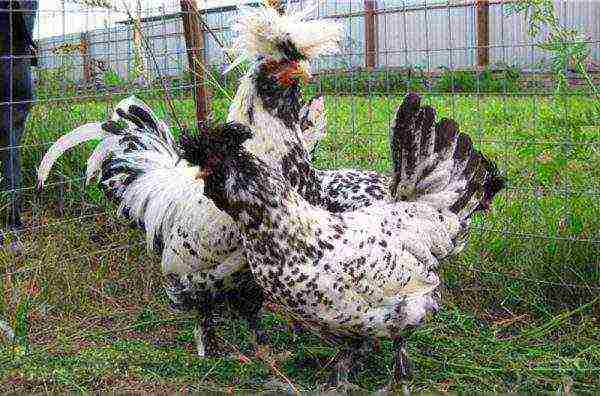
Golden
Golden brown plumage. At the end of the feather, the brown color turns into black, forming an edging, which, passing from the crest, neck to shoulders, back, lower back forms the letter V.The outer protective tail feathers and downy wings are spotted. Wing feathers of the first order are brown on the inside with a golden tint, on the outside they are dark.

Advantages and disadvantages
Among the pluses poultry farmers call decorativeness, unpretentiousness, low feed consumption, a large percentage of preservation of young animals, early maturity, good taste of eggs and meat.
Flaws: the risk of buying chickens of dubious breed, relatively low productivity.
Manufacturing characteristics
Purpose of the breed
Refer to early decorative group... However, given the rather high egg production, fatness, high preservation of young animals and hatchability, we can conditionally define them as a meat and egg breed.

They are bred on farms, personal plots, rural farmsteads. Characteristics of the breed and reviews of farmers can be viewed below.
Weight
Chickens do not belong to giants... Males gain weight 1.7-1.9 kg. Adult roosters reach 2.5-3 kg. Chickens - 2 kg. The meat is tasty, tender.
Egg production
The indicator is average. From 150 to 300 eggs are obtained from Pavlovsk chickens a year. The shell color is white, creamy, beige. The weight of an oblong egg is 50-65 g.
Chickens have a developed maternal instinct. The safety of chickens, thanks to the care of hens, exceeds 90%. Poultry breeders often use Pavlovsky chickens to incubate chicks of other breeds.
Temperament
Pavlovsk chickens are active, mobile, love to run. Distinctive behavioral trait - fussiness, the ability to fly over obstacles by changing the direction of flight.
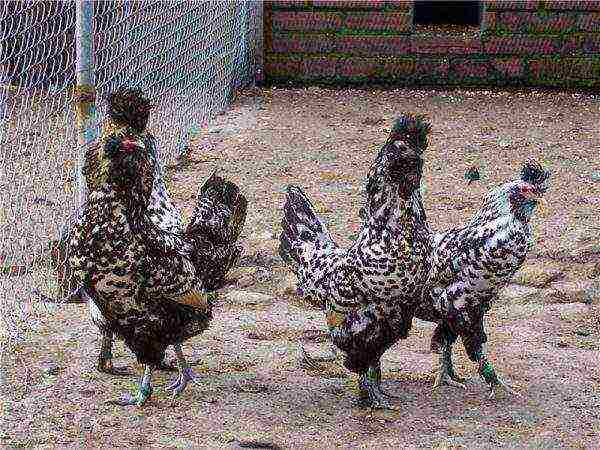
Roosters are cocky. Despite the belligerence of males, chickens get along well with other breeds of birds - ducks, geese, turkeys, guinea fowls.
Gullible and friendly towards people. Tied to the coop, don't try to escape.
Features of the content
Chicken coop or walk
Birds are unpretentious. Due to the rich, dense plumage, high physical activity withstand frost in unheated, wind-protected rooms. But the optimal is the presence of a spacious, warm, equipped chicken coop.

Poorly tolerate cells, limited space. Due to their natural mobility, chickens need regular walks.
In the summer, the stay in the shed is reduced to a minimum, leaving the entire daylight hours for the walk.
Home improvement
The chicken coop must have an area of at least 3 m² and a height of up to 2 m. the presence of a window.
A manhole with an insulated door is made in the wall. Perches are filled at a height of about 80 cm. The nests (35x35x30 cm) are fixed along the walls, placed on the floor, laid out from the inside with hay or straw. The floor is insulated with hay, straw, sawdust.
The feeders are washed periodically. It is better if they have legs, then the chickens will scatter less food.
Diet and diet
Chickens compare favorably with meat and egg-meat breeds low feed consumption, undemanding diet. In the summer they peck brilliant green, worms, insects.
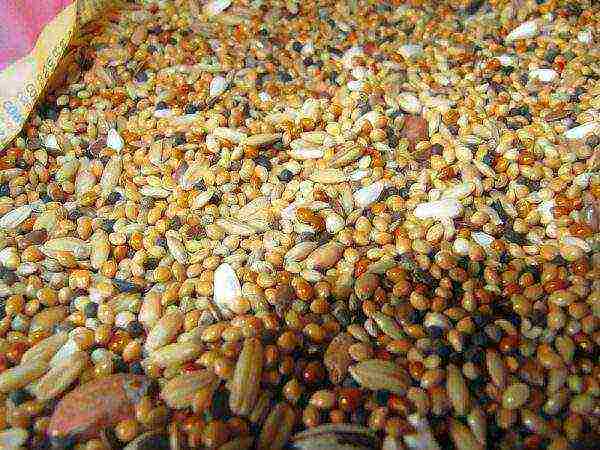
In winter, they switch to traditional diet: grain, wet mash, compound feed, bran, vitamin supplements. With proper feeding, only 50 g of compound feed per day is consumed per bird of the Pavlovsk breed.
In winter, a third of the diet should be solid food. The rest is mash.
The daily diet of Pavlovsk laying hens must include: grain, juicy plant mixtures, animal feed, mineral additives.
Chickens from which it is planned to receive eggs for hatching young stock and hens should receive protein feed, vitamin complexes.
Protein feeds include meat, meat, fish meal. Whole and skimmed milk, cottage cheese, yogurt. Plant products - legumes and flour from them, meal, cake, yeast, nettle.
Pavlovsky chicks in the early days fed with cottage cheese, hard-boiled eggs mixed with wheat, corn grains, or boiled millet. On the third day begin to feed with fresh alfalfa, clover, nettle, boiled potatoes, carrots.
From the fifth day young animals should receive wet and dry mash, dairy and animal feed, green tea, carrots, tops, coniferous and grass flour, yeast.
Chicken craws should be full by the end of the day.
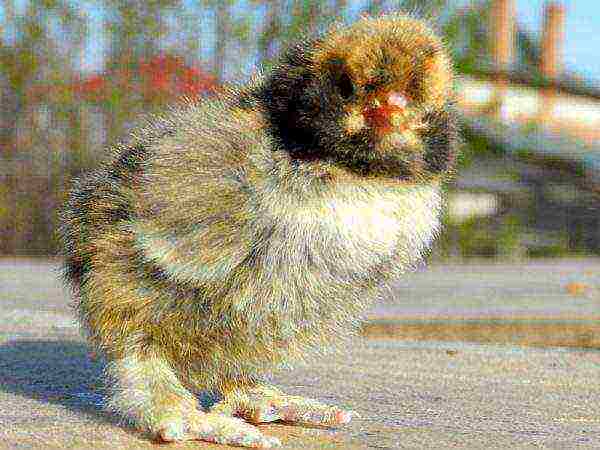
The growth rate and safety of the chicks depend on the variety and balance of the feed.
Chicks are fed on a tray. Drinking bowls are placed with warm milk or clean water at room temperature.
When chickens do not have the opportunity to get pasture, they adhere to diet:
- Feed 3-4 times a day.
- In the morning birds get a third of the grain, after a couple of hours - a wet mash.
- In the evening fill in the remaining grain rate.
Chick care
Pavlovsk fluffy chicksare fast fledged. At birth, spotted, dark. The growing feathers are golden, silvery with black specks.
To hatch chickens, eggs weighing 60 g are selected. Chicks are hatched under a brood hen or in an incubator.
Pavlovsk chickens are caring hens. They independently heat the chickens, cover them. They teach how to find food, make sure that the chicks are not lost.
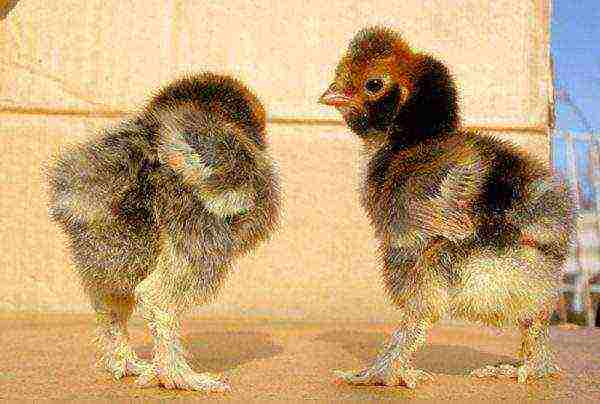
A special place is fenced off for incubator chicks. Heating devices are installed: reflectors, electric lamps from 100 to 150 watts, special heating pads.
Temperature range:
- 1-5 day temperature + 30 ° С.
- 6-10 day the temperature should be reduced to + 26 ° C.
- From day 10 weekly reduce the temperature by 3 ° С to + 18 ° С.
The thermometer in the young stock is suspended half a meter from the floor.
With hypothermia, they lose their appetite, gather at the heat source, climb on top of each other, push, trample the weak.
Overheating can be seen by the open beaks. Chicks drink more often, spread their wings, lie down, refuse food.
Diseases
Pavlovsk chickens resistant to diseases, colds. Due to the consumption of large amounts of green food in the summer, they have a strong immune system. Poultry farmers with large livestock vaccinate chickens against diseases of Marek, Newcastle and Gumboro.
Price
Not the most expensive breed of chickens... Chicken price 300-500 rubles. The cost of adult elite birds from 500 rubles.
Reviews of poultry farmers
And what kind of heart they are, when I go to them, I need to fix everyone, talk, talk about life with them, a very interesting breed. So beauty and soulfulness in one bottle. Poultry Forum
Good breed! It is necessary to support the poultry farmers raising this breed of chickens so as not to lose the heritage of their ancestors. Rosselkhoz information portal
As for the features of care, then, despite its unpretentiousness, this bird, like any other living creature, of course, requires attention to itself. Business and agriculture
In terms of economic qualities, chickens do not differ from poultry of other breeds. It's just a kind of flower garden of the beautiful, transferred to my poultry house. And sometimes it is pleasant to realize that you can admire the creation of the old masters of the past. The bird that lays the golden eggs
Them already not industrially bred... For the most part, Pavlovsky chickens can be found in private farms of enthusiasts for the revival of the domestic breed.
